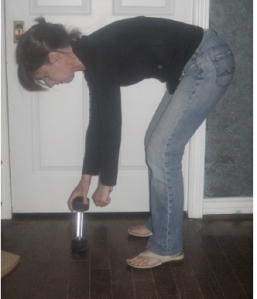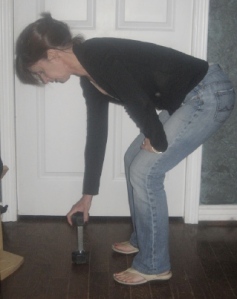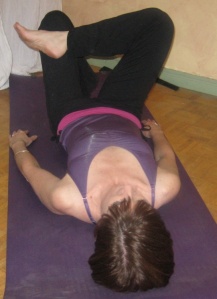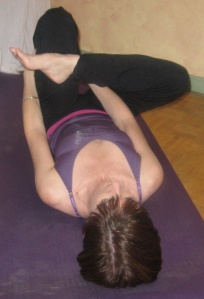Hi everyone,
Our bodies are designed to move, they are not designed to sit for long periods of time. One of the things that happens when we sit is that we lose the inward, lumbar curve of our lower back. When this curve is lost, our posture suffers, we slouch and we put tremendous pressure on the discs of our lower back. If you happen to have osteoporosis, a herniated or bulging disc, sciatica or any sort of lower back pain, it is absolutely critical that you have this lumbar curve in your spine at all times.
The problem with sitting is that very few chairs have proper lumber support. Even the ones that claim to have support, don’t have enough of it so we still slouch to a certain degree.
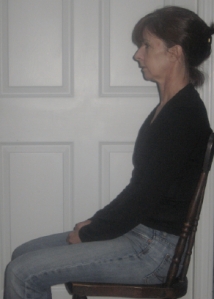
How NOT to sit
In the photo above, you might think that this is an okay way to sit because my back is supported. But here’s the problem. Look at my lower back. It is flattened and there is no lumbar/inward curve in the spine. If you have a herniated disc, osteoporosis or sciatica, sitting like this (or slouching even more) is going to make the problem worse.
Here’s what I show all of my clients. It’s the proper way to sit with support. It will feel a little “rigid” at first but it will quickly become comfortable.
First, you will need a good-sized bath towel. Fold it in half lengthwise. Start rolling it up until it’s a cylinder and secure the ends with elastics or duct tape. When it’s finished, it should be 6 to 8 inches in diameter. Now sit in your chair and wiggle your hips all the way to the very back of the seat. Lean forward and place the roll behind your navel in the curve of your lower back. There! Now when you sit, your lower back has the lumbar curve in it but it is supported by the towel. You’ll notice in the photo below that my spine is more vertical when compared to the first photo. I’m not leaning back. When sitting correctly, you should be able to draw a vertical line from the earlobe, through the shoulder to the hip. In this photo, you can do that. In the photo above, the line is not vertical at all!
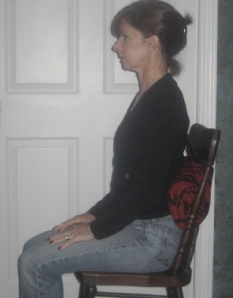
How to sit properly using a lumbar support
You can buy a lumbar roll instead of using a towel, but make sure it’s big enough. Many of the ones that I’ve seen are only 3 – 4 inches in diameter which is not big enough for an adult.
Remember if you have questions, add a comment here or email me via the website (on the right). And I’d really appreciate it if you would check out the workouts that I have on my website. There are even special workouts for osteoporosis and herniated discs that teach you how to strengthen your abs while keeping the lumbar curve intact.
Cheers,
Sherry



